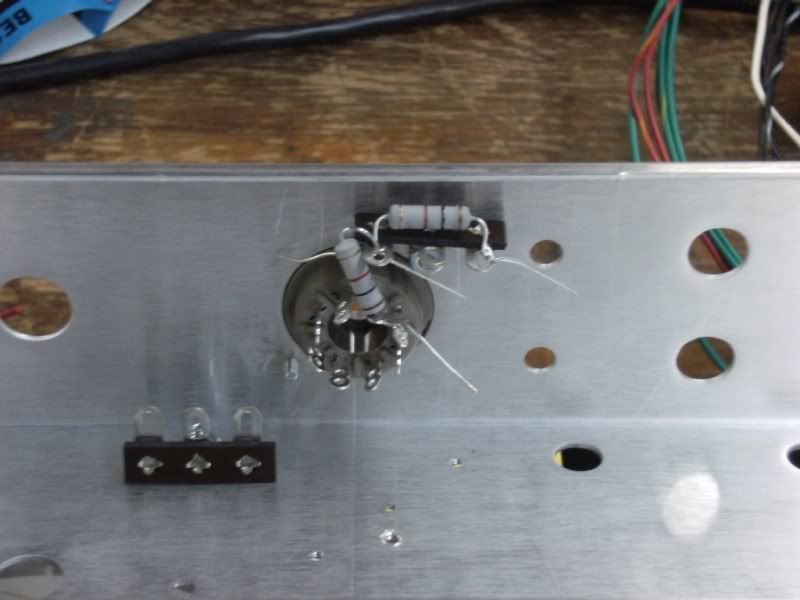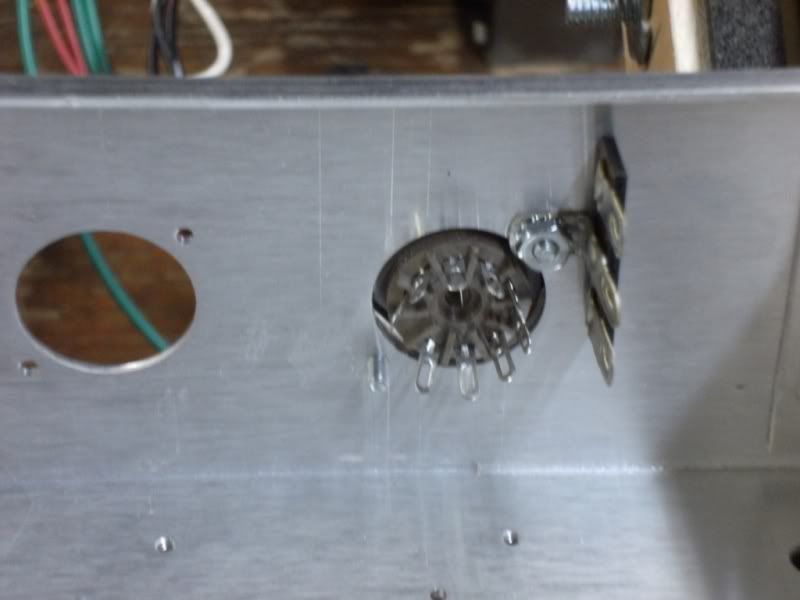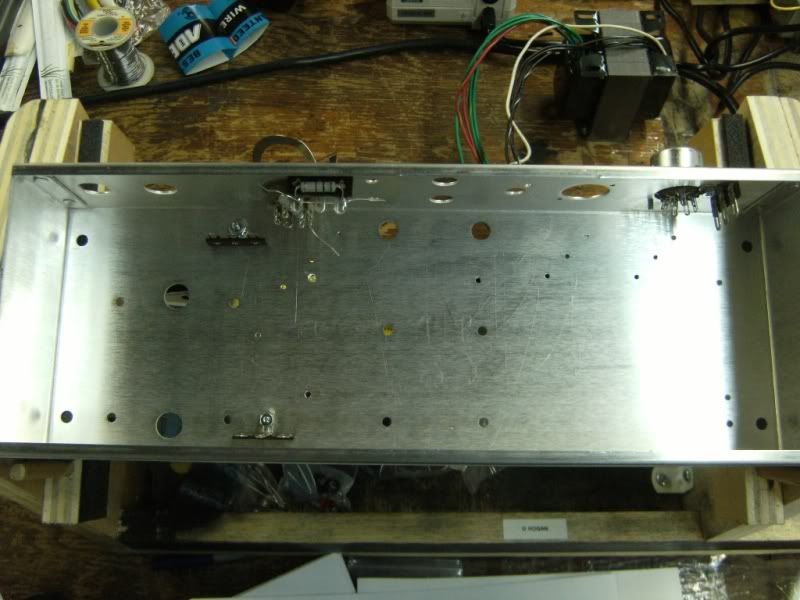Thanks to everyone involeved in getting Amp Camp going and pulling it off.
I would call it a success. I do have a few things left to do to get going but for me, that was the part of the reason for attending the workshop - to learn.
I walked away with a few things to do, but I also feel that I have the knowledge and resources to get those things done on my own.
Going in to the workshop, I fully expected to have a lot more to finish on my own. When I say that, I mean that I expected to be further behind, personally.
It's just the way I am - a little laid back, I'll get to it sort of attitude. The camp ran longer than expected, but everyone hung in there.
Special thanks to Steve and Chris for their guidance through the build and for their patience.
Some of the guys got things going and I think everyone was VERY impressed with what we heard. The Trinity TRAMP is an amazing amp when you consider how straight-forward it is and how flexible it is.
So, on to the pics!
Step 1 - Pretend like you know what you're doing and look organized.
The kit was wrapped up in newspaper. The transformers sitting beside it. That guy in picture became an integral part of the tone that will make it unique to my amp.

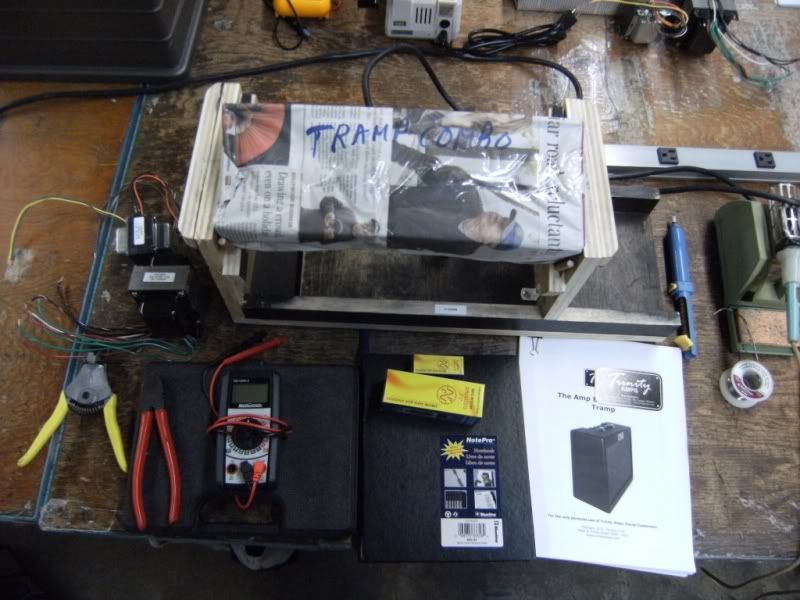
Parts - All of the parts come bagged and tagged inside the chassis.

Board - The board comes with all the eyelets laid out and punched in. A big bag o' wire waits its fate.
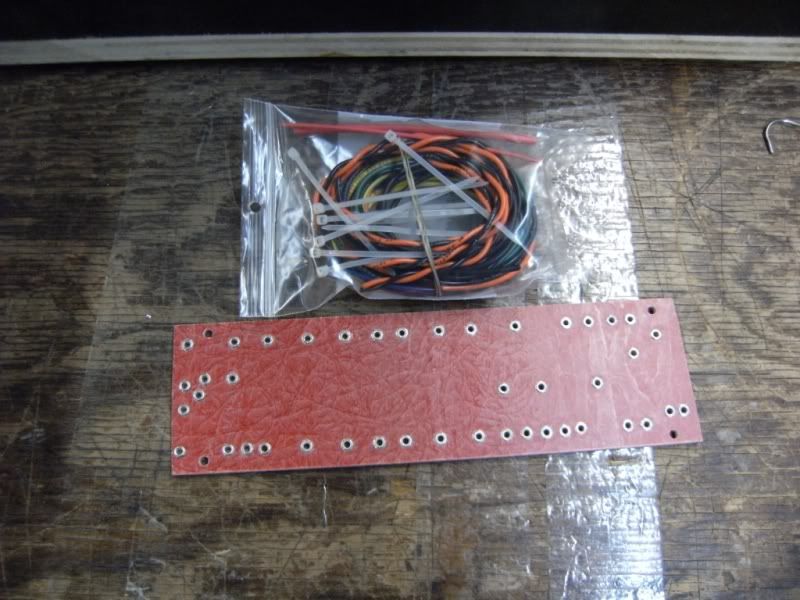
Jumpers - First thing to do is add in the jumpers wires on the bottom. Follow the layout and tack the connections into the eyelets - you'll be adding components and more leads to the same holes so leave as much room as you can but use enough solder to keep things in place.
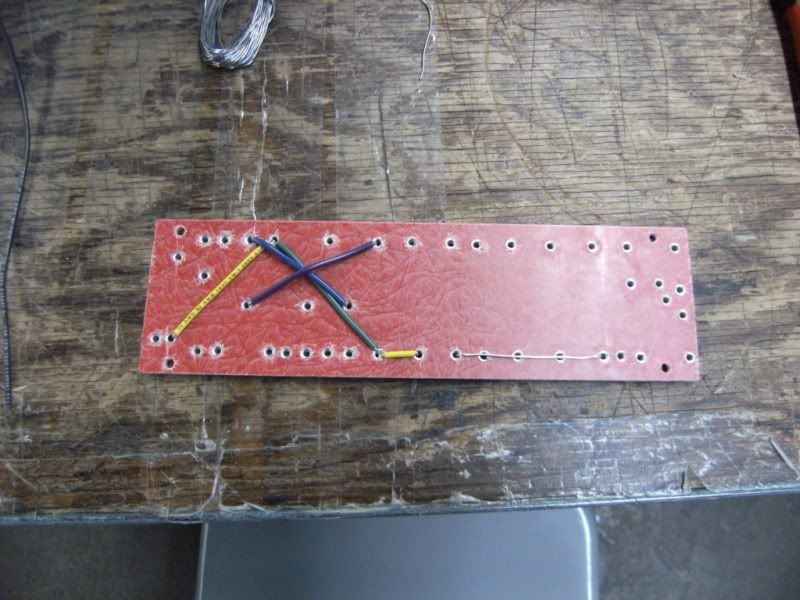
Hardware - Terminal strips and tube sockets go in. No real tricks here - except maybe to look ahead as to what else needs to go into the terminal points so that you can gauge how things should line. Try to keep leads as short as possible while leaving enough room to get new connections in place later. "Build in layers." To do that you need an idea of what all the layers are. So read the guide ahead of time.
